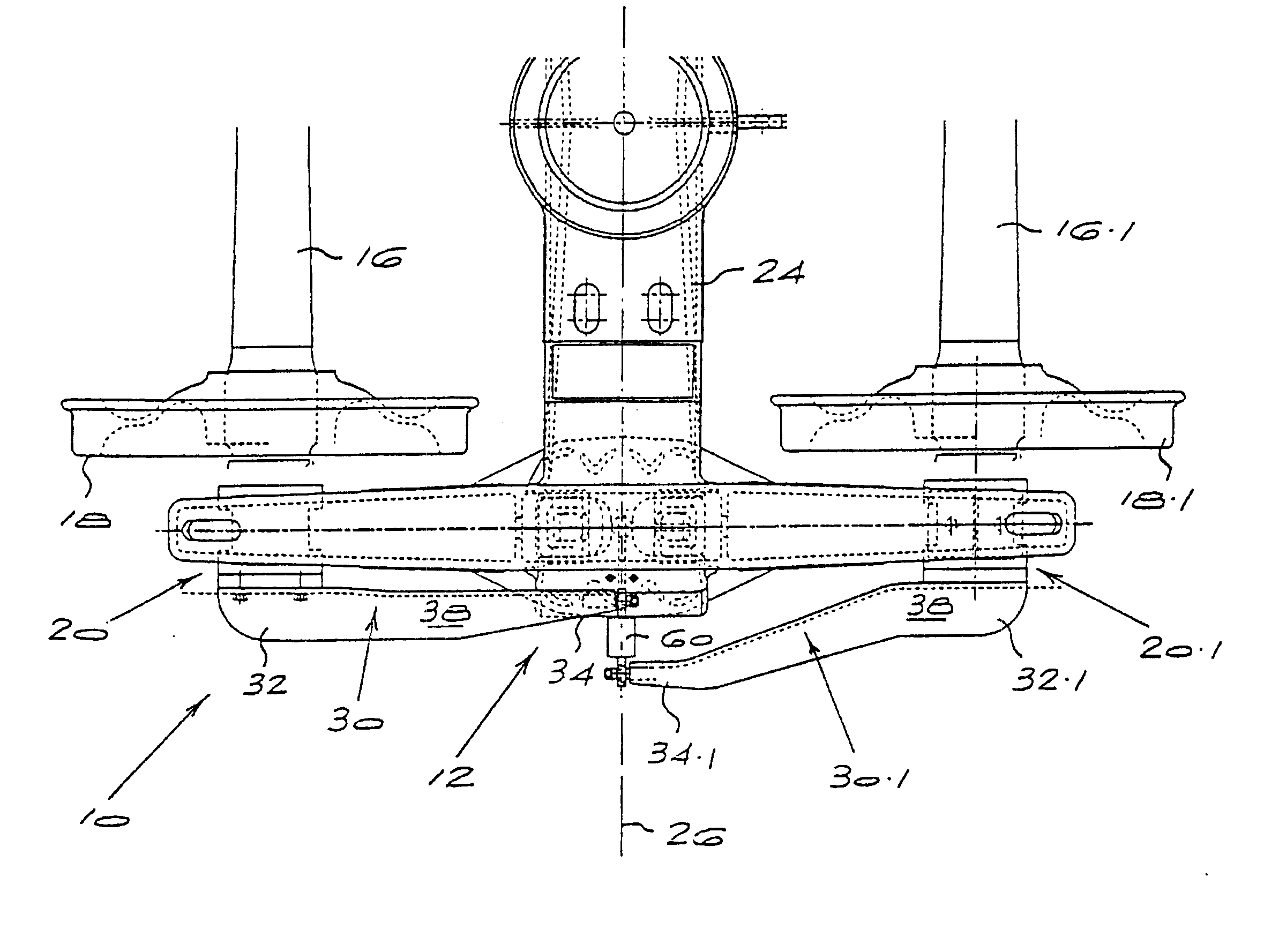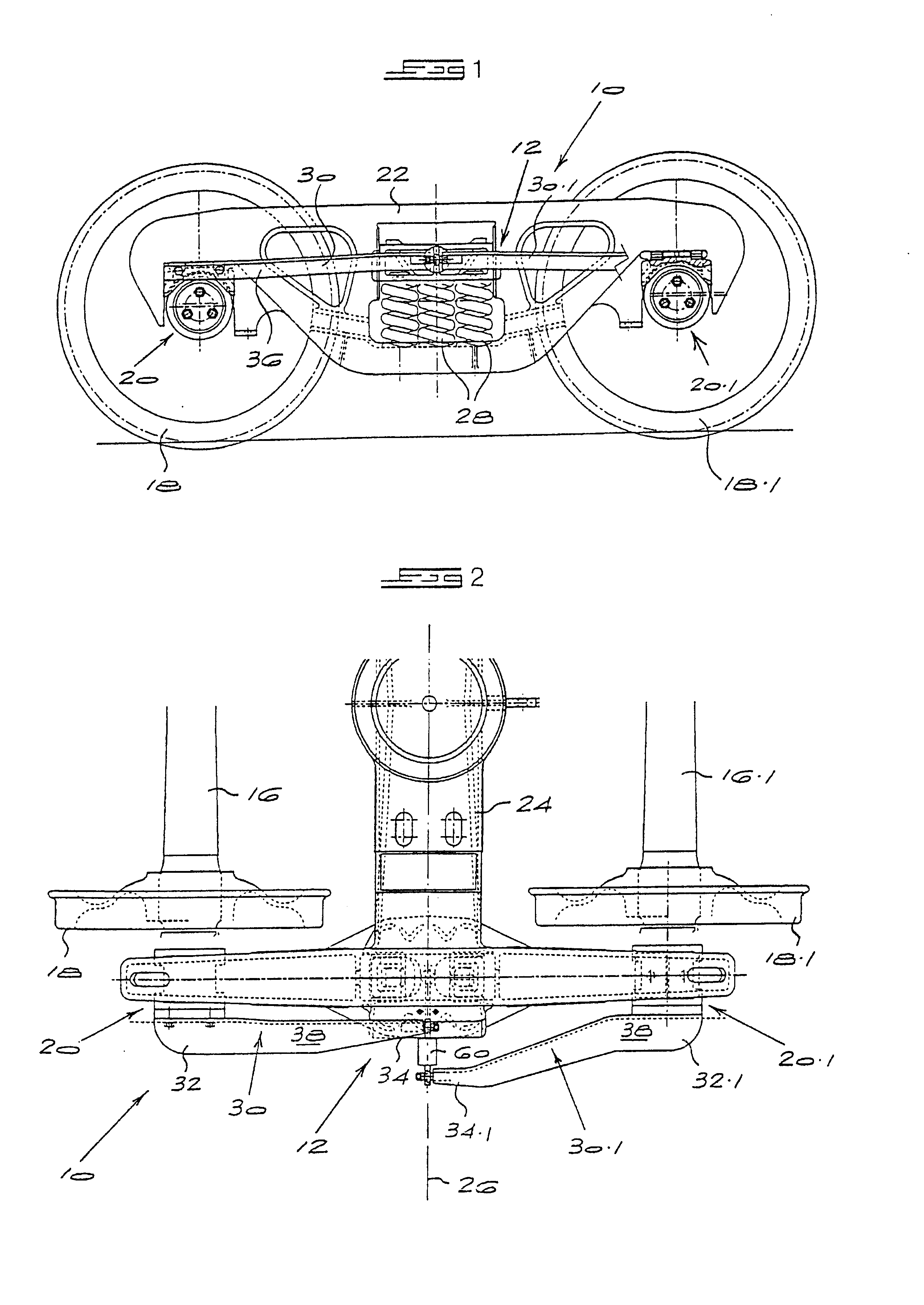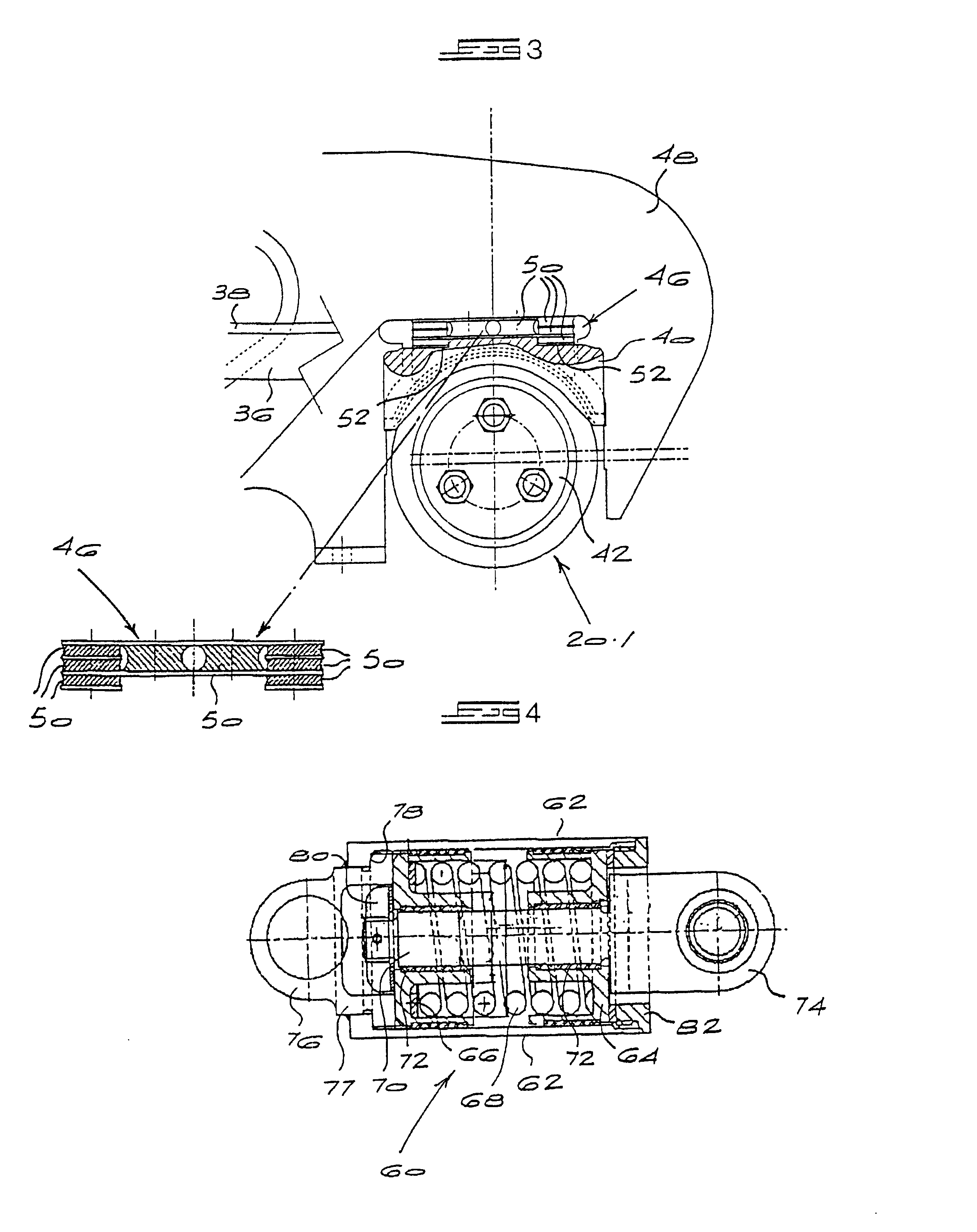Self-steering bogies
- Summary
- Abstract
- Description
- Claims
- Application Information
AI Technical Summary
Benefits of technology
Problems solved by technology
Method used
Image
Examples
first embodiment
This is illustrated in FIG. 12 which shows a theoretical plot of deflection on the horizontal axis against transmitted force on the vertical axis. In the initial stage A where the applied load is insufficient to overcome the prestress in the spring it will be seen that the spring can transmit a substantial load with very little deflection. In practice, as mentioned previously in connection with the device 60 of the first embodiment, it is desirable for there to be a few millimeters only of deflection during this stage.
The point B in the graph represents the point at which the applied load is equal to the prestress in the spring and the stop lifts off the radial arm. Thereafter in stage C the load which the spring can transmit increases only very slightly with increasing deflection.
As in the previous embodiments, the design is such that adequate lateral force can be transmitted during stage A to provide a suitable level of inter-axle shear stiffness. Thereafter the maximum transmitte...
embodiment 510
Referring firstly to FIGS. 26a and 26b, there is shown an embodiment 510 which includes a back plate 512 carrying spaced apart, projecting support pins 514 between which a leaf spring 516 is engaged. A cam member 518 is connected centrally to the leaf spring by studs 520. The cam member has a central recess 522 and profiled cam surfaces 524 arranged symmetrically on either side of the central recess.
The device 510 also includes a roller 526 carried rotatably by a lever 528 consisting of spaced apart arms 530 between which the roller is located. Between the roller and its lower end, the lever 528 is supported pivotally on a pin 532 projecting from the back plate 512. At the lower end of the lever a transverse pin 534 is attached via a spherical bearing 536 to the end of a link 538.
The device 510 serves to transmit forces between the link 538 and the back plate 512. In a practical application which the device is used to provide a longitudinal yaw constraint, the back plate may be fixe...
PUM
 Login to View More
Login to View More Abstract
Description
Claims
Application Information
 Login to View More
Login to View More - R&D
- Intellectual Property
- Life Sciences
- Materials
- Tech Scout
- Unparalleled Data Quality
- Higher Quality Content
- 60% Fewer Hallucinations
Browse by: Latest US Patents, China's latest patents, Technical Efficacy Thesaurus, Application Domain, Technology Topic, Popular Technical Reports.
© 2025 PatSnap. All rights reserved.Legal|Privacy policy|Modern Slavery Act Transparency Statement|Sitemap|About US| Contact US: help@patsnap.com



